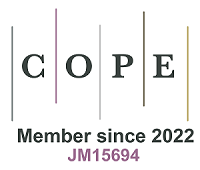fig4
Figure 4. Detection of EML4-ALK translocation in plasma samples from EML4-ALK-positive NSCLC patients. EVs, LPPs, and soluble proteins were separated using a 13 mL SEC column packed with 4RRF resin. (A) Representative western blot detecting EV markers (CD81) and LPP markers [ApoE and ApoB (indicated by a red arrow)]. 20 μL of each SEC fraction were loaded per well. Graphing software: LAS 4000 mini system and Fiji ImageJ; (B) Elution profiles of EVs, LPPs, and soluble proteins. Densitometry analysis of western blots for EV markers (CD9 and CD81) and LPP markers (ApoE and ApoB), alongside absorbance at 280 nm for total protein. The % signal for each marker in each fraction is shown (100% represents the sum of signals for that marker across all eluted fractions). Squares indicate pooled fractions for further analysis. Data represent mean ± SEM of four independent runs. Graphing software: GraphPad Prism; (C) Particle size distribution in EV-enriched fractions, measured by NTA. Graphing software: NTA 3.0 software; (D) Representative TEM images of EV-enriched fractions after negative staining. Scale bars = 1 μm. Graphing software: JEM1400 Flash transmission electron microscope (Jeol) and Image J; (E) Detection of EML4-ALK translocation by dPCR in EV-enriched (fractions 11-13), LPP-enriched (18-20), and protein-enriched (25-27) fractions. Graphing software: QuantStudio 3D AnalysisSuite Cloud Software. Each dot represents a well on the dPCR chip. Blue dots represent wells with at least one copy of the EML4-ALK translocation (FAM fluorophore); red dots show the detection of the endogenous PUM1 gene (VIC fluorophore); Yellow and green dots indicate wells negative or positive for both targets, respectively. ALK: Anaplastic lymphoma kinase; dPCR: digital polymerase chain reaction; EML4: echinoderm microtubule-associated protein-like 4; EVs: extracellular vesicles; FAM: 6-carboxyfluorescein; LPPs: lipoprotein particles; NTA: nanoparticle tracking analysis; NSCLC: non-small cell lung cancer; PUM1: pumilio homolog 1; SEC: size-exclusion chromatography; SEM: standard error of the mean; TEM: transmission electron microscopy.











